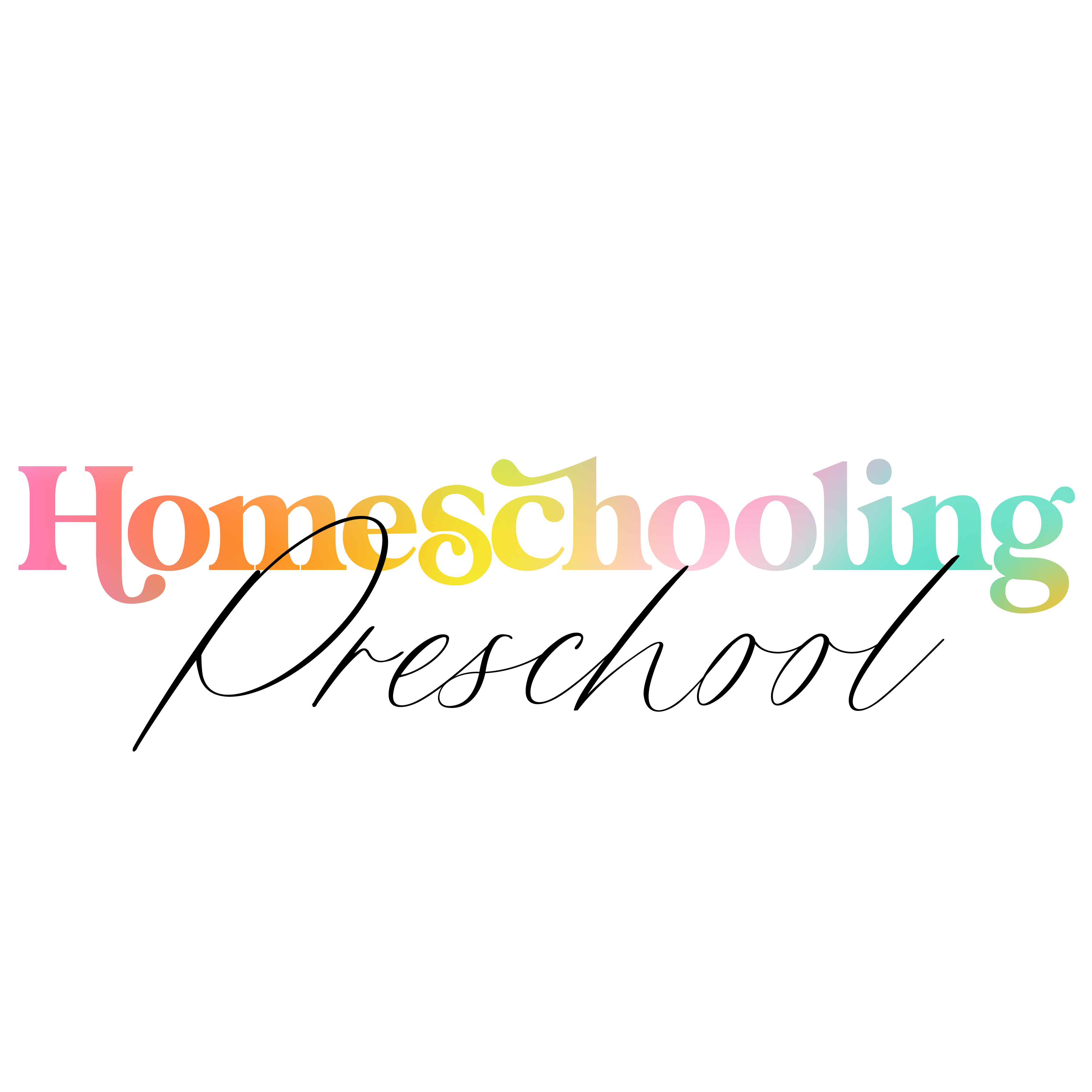Discover 25 wonderful items to use as math manipulatives. They are a fun and easy way to bring your preschool math lessons to life.

When to Use Math Manipulatives
Nearly all preschool math lessons should include math manipulatives because preschoolers are visual learners. They haven’t had the time or practice to visualize things mentally.
But if you use the same math manipulatives every single day, all year, the math lessons can become dry and less appealing.
Preschooler rely on things being inviting and fun to keep their interest. Thus, having an ample number of math manipulatives available is essential.
Thankfully, this doesn’t mean going out and filling your shelves with many different things. You can utilize what you already have on hand.

This article may contain affiliate links to products that may help you when homeschooling preschool.
25 Things to Use as Math Manipulatives
All these items can be used as counters– but that’s not all they are good for!
1. Pom Poms
Big ones, small ones, colorful ones. All pom poms make wonderful math manipulatives. From pattern work to counting to filling in ten frames, pom poms will do it all.
2. Dry Pasta
Crack open a box of pasta and let your little ones use the pasta as counters.
The bonus is that they get exposure to the pasta while it is dry and then can compare it to the wet, floppy pasta they eat.
3. Dry Beans
Dry beans are crazy cheap for a pound. They can be used in all sorts of ways.
*Be sure your little ones are past the stage of sticking beans up their noses or in their ears if you are choosing to use them*
4. Chenille Stems (Pipe Cleaners)
Because chenille stems are so flexible, they make the perfect math manipulative to have your little one practice forming numbers or stringing on beads.
5. Building Blocks
Besides building towers, building blocks can help little ones see that a block with three prongs needs three single blocks to cover it entirely or a single block and a block with two prongs.

6. Crayons
Pattern making, sorting by colors, and counting can all be practiced using crayons.
7. Shape Blocks
Differently shaped blocks are the perfect math manipulatives. They can be sorted by color, shape, or size. They can be used to make patterns or to fill in an outline (to work on spatial awareness and reasoning).
8. Egg Cartons
Egg cartons are a lovely way to work on 1 to 1 correspondence. Have your little one practice putting one item in the egg carton in each spot.
(P.S. If you can, let your little ones go around (inside or outside) to collect things and put them in the egg carton)
9. Dominos
Dominos come with numbers already on them. They are great for number recognition and matching the same numbers together.
10. Toy Cars
Make math more fun with toy cars. Count with them, sort them by attributes (color, type, etc.), or drive them into parking spaces marked with numbers drawn on a paper sheet. Have your little one say the number on the parking spot they pulled into.

11. Action Figures / Dolls
Work on comparisons if there are many different action figures or dolls. What is the same about them? What is different?
12. Plastic Animals
Sort the animals by type or size. Practice adding or subtracting using plastic animals.
13. Buttons
The possible uses for buttons in preschool are endless. String them on chenille stems, count them, sort them, etc.
14. Silk Scarves
If you don’t have silk scarves, fabric scraps or wash clothes can work, too.
Sort them by color or texture. Count how many of each texture you have.
15. Chocolate Chips
Any math concept can be made instantly better with chocolate chips. Count with them, create different shapes, and do a subtraction problem (and eat them).

16. Raisins
It’s the same idea as the chocolate chips.
17. Stones
If possible, let the preschoolers collect stones to use as math manipulatives. They can classify them, add and subtract with them, or count them.
You can write numbers on the stones using a permanent marker if they are flat.
18. Pine Cones
Use pine cones as counters to bring new textures, sights, and smells into your math lessons.
19. Sticks
Compare sticks, use them as counters, or try to make numbers using sticks.
20. Pretend (or real) Money
Use at your discretion (you know your preschooler best)
This provides excellent exposure to money and money concepts. Plus, your little one can sort and classify the money.

21. Large Foam Dice
Perfect for randomly choosing numbers in games, activities, and lessons.
The dollar store usually has some if you are looking for some for cheap.
22. Magnetic Tiles
Beyond building (and the incredible creative benefits of it), magnetic tiles can be used to work on spatial awareness, problem-solving, and measuring things.
23. Mini Erasers
A fun, new counter choice!
24. Paper Straws
Colorful straws open up many math manipulative possibilities because they can be cut into different sizes to practice sorting by length or color.
25. Popsicle Sticks
There are way too many uses for popsicle sticks when it comes to using them as math manipulatives.
Writing different numbers on them is a fun way to choose a number or use them to put the numbers in order from least to greatest.
If your preschooler is ready for more of a challenge, write simple addition or subtraction problems on the sticks.
Beyond that, the sticks can be used as counters or to create various flat-edged shapes.

Hands-On Preschool Math
Making preschool math hands-on is essential to making math concepts stick. With various math manipulatives, you can make math time fun and engaging.
